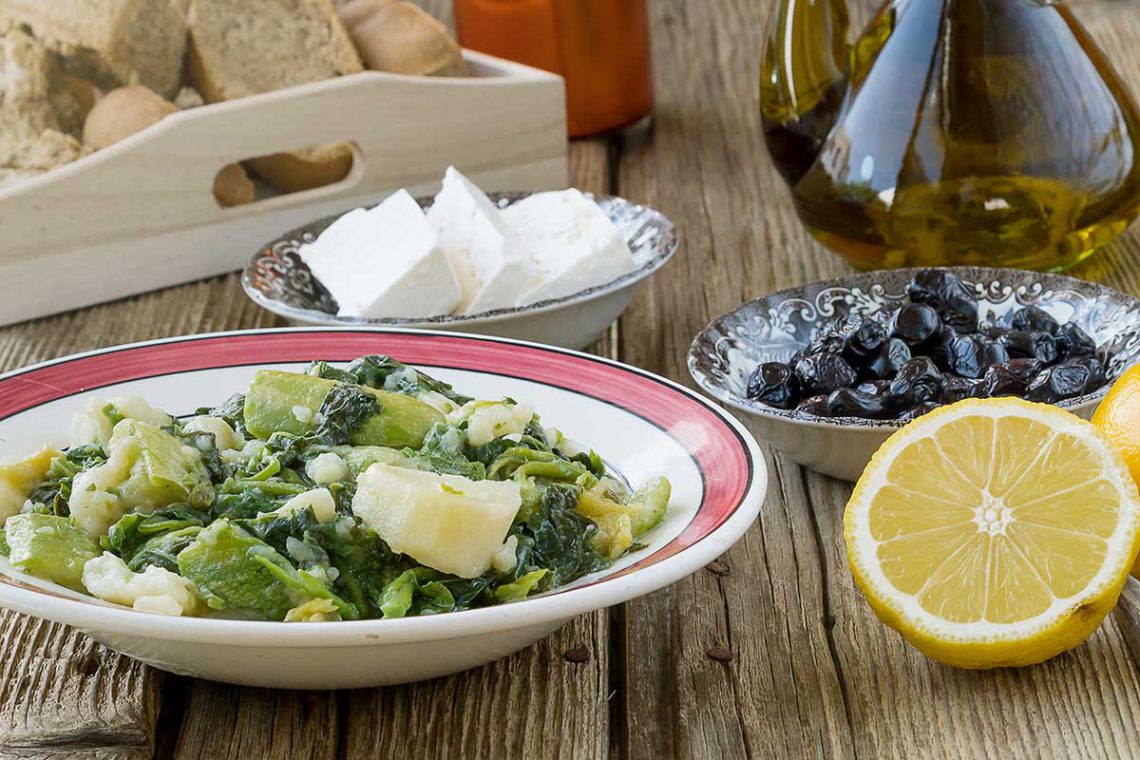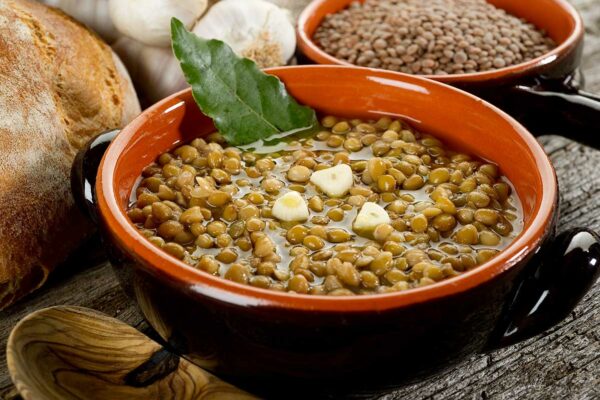Gastronomy in Crete: Must-try Dishes From the Island
When people talk about the Mediterranean Diet, few know that Crete played a significant role in developing it. However, the “Mediterranean Diet” concept is too broad because 22 countries surround the Mediterranean Sea. Although there are similarities between their cuisines, they are as diverse as they are interesting. Diets depend on the environment, geography, and climate, all influencing agricultural and lifestyle practices in each country. These factors influenced the development of Cretan gastronomy too.
Crete is mainly mountainous, with high peaks guarding fertile valleys and plateaus. Only a third of the surface of the island is cultivated. Olive groves and citrus orchards dominate the landscape, followed by vineyards.
Cretans use hothouses to grow vegetables year-round, and the mild winters help this practice. The main vegetables available on the island include potatoes, zucchini, tomatoes, cucumbers, and cabbage. Horta – a term describing seasonal wild greens – is another staple of the local gastronomy. Pulses are consumed regularly, providing a much-needed source of vitamins, minerals, fiber, and low-fat protein.
Olive Oil: A Staple of Cretan Gastronomy
Olive trees thrive on Crete. The island has more than 30 million olive trees producing mostly extra virgin olive oil (EVOD). The oil is vital for the local gastronomy, being used in everything from salads to mains and even baking. Olive oil tasting is customary.
When visiting Crete, look for extra virgin olive oils from Sitia, Chania, or Messara. There are several olive oil producers on the island, many offering factory and tasting tours.
Visit an olive oil museum to expand your knowledge of customs and traditions related to olive oil production on Crete. The Museum of Olive Oil “Fabrica of Dermitzakis,” not far from the Elevated Olive Tree at Vatolakkos in the Chania regional unit, is the most interesting to visit on Crete. You get to see the 18th-century olive mill, tools of the trade, furniture, and other objects used for cooking and consumption in rural areas.
Horta: An Acquired Taste
Horta is a term used to describe all kinds of wild greens. Cretan grandmas know how to distinguish them from inedible weeds and forage them seasonally. When you order horta in a restaurant, what you could be shop-bought and grown in a hothouse. Rural tavernas will likely have horta foraged in the wild.
Types of horta include dandelion leaves, sorrel, beet greens, amaranth, Mediterranean hartwort, mustard greens, prickly lettuce, and the list goes on. There is no complexity in cooking horta: the greens are steamed or boiled, then drained and served seasoned with salt, olive oil, and fresh lemon juice. At home, you can use spinach or kale for cooking something similar.
Horta is an acquired taste because depending on the wild greens used, the aftertaste may be slightly bitter or metallic. Paired with a glass of cold wine, this Cretan staple is a healthy appetizer and a must-try to complete your culinary experience.
Meze: A Medley of Tasteful Dishes
Dining on Crete is a social experience. Diners love to share food, and the locals order many small dishes to sample a little bit of everything. Here are some suggestions for your next Cretan meal:
- Tzatziki is always a crowd-pleaser: creamy Greek yogurt mixed with grated cucumber, garlic, mint, or dill is an excellent dip that can also serve as a sauce for heavy meat dishes.
- Fava is a wonderfully creamy puree of yellow split peas. The most basic way to cook it is to sauté onion and garlic in olive oil, then add the peas, water, simmer at low heat until the pulses are soft, then mash and season with salt, olive oil, and lemon juice.
- Dolmadakias are bite-size grape leaves stuffed with rice and herbs. They are usually served with a dollop of yogurt or tzatziki.
- Gemista are vegetables like tomatoes, zucchini, eggplant, and peppers stuffed with rice and herbs, then baked until tender. They taste delicious the next day, after their flavors had enough time to blend.
- Octopus: grilled, boiled and glazed, or stifado (stewed) is favorite meze dish too.
- Salads are always ordered among the meze, either seasonal or traditional Greek with a generous serving of feta cheese.
- Dakos are similar to bruschetta, except that instead of toast they are prepared with rusks, which are then topped with tomatoes, feta, or other local salted cheese, olive oil, pepper, and Cretan herbs.
You can continue your meal with your favorite seafood or fish, an order of lamb chops with fries, or any grilled meats if you still have room after the meze. Deserts are usually on the house, and no meal is complete without a few shots of raki (a Cretan brandy also known as tsikoudia). Stin ygeiá sas!





